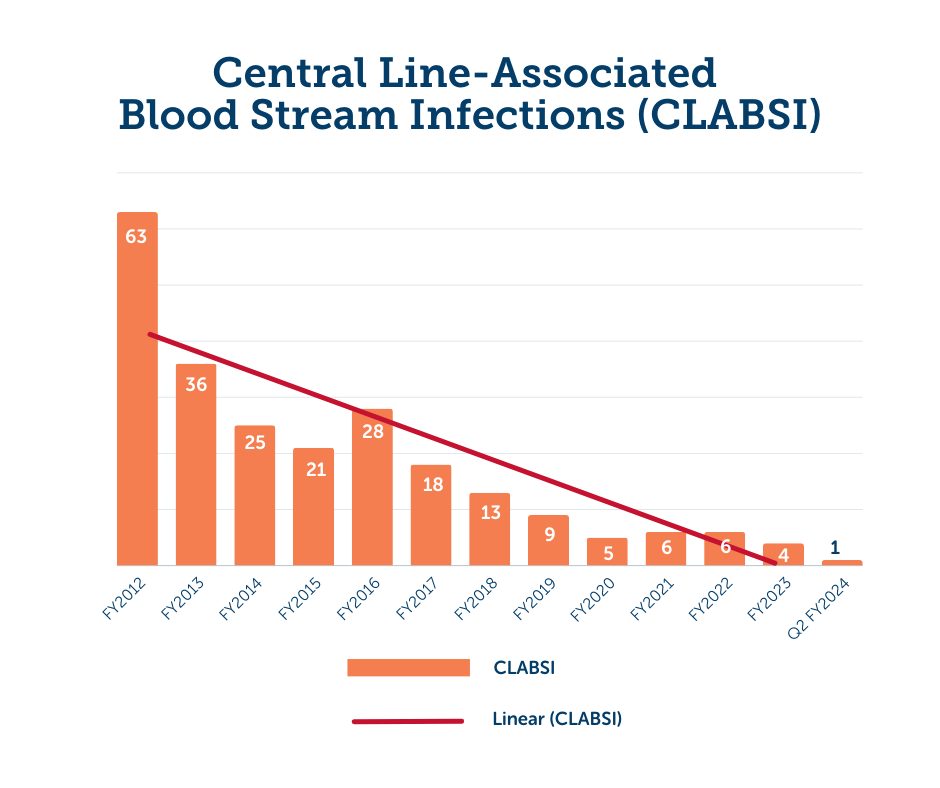Central Line-Associated Bloodstream Infections
Patients who are in need of frequent blood draws, nutrition or medication are no strangers to having a central line to administer these treatments. Central lines are placed in the groin, neck, chest or arms.
While a central line increases the risk of bacteria or other germs entering the blood stream if not properly cared for, it is preferred over having to poke a patient for each treatment. A little infection can quickly turn into a life-or-death matter because some of our youngest patients don’t have fully developed immune systems.
Valley Children’s is proud to have achieved milestones that are rare in the medical field for avoiding central lines. When your child has a central line, you can count on us to provide them with the safest care.

Graph displays fiscal year data
What you can do to help:
- Ask anyone who is around the patient – visitors, medical staff, etc. to clean their hands and sanitize, especially if they are touching your child
- Clean your hands before and after you touch your child
- Ask your child’s doctor why your child needs the tube and how long it is needed
- If the bandage comes off or becomes wet/dirty, tell your nurse or doctor right away
- Let your child’s nurse or doctor know if the area around your child’s tube is sore or red
- Make sure your child has a bath every day. You may be asked to use special cloths that help kill germs on the skin
- Do not allow your child to play with the protector caps filled with alcohol
- Tell your nurse if you see that a protector cap filled with alcohol has fallen off or is loose